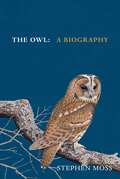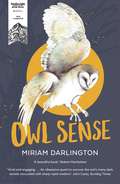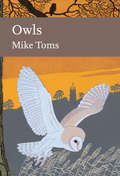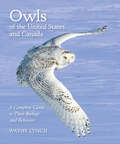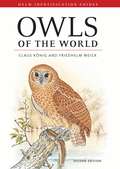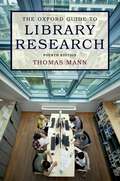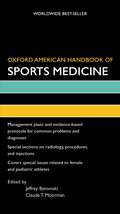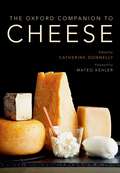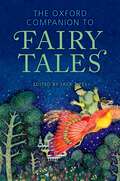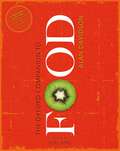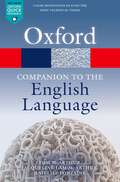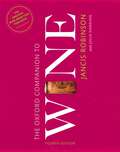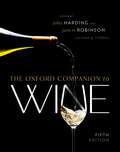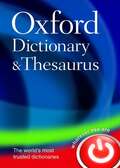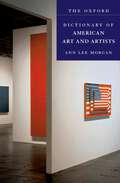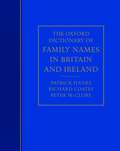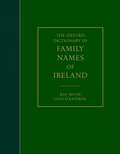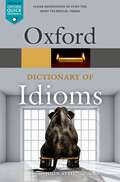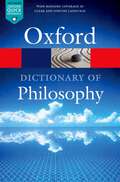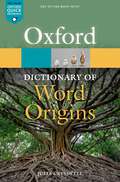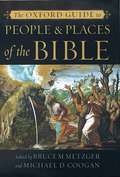- Table View
- List View
Overview of Math Literacy - WBM (World Bank Modules)
by BookshareThis comprehensive guide aims to assist educators in teaching math skills to students who are blind or visually impaired. It addresses the significance, challenges, and fundamental steps in math instruction for this demographic. Beginning with foundational concepts like size, weight, shape, color, and patterns, the document progresses to cover counting, number sense, and functional math skills applicable in daily life. It provides hands-on activities and games utilizing various objects, textures, sounds, and shapes to reinforce skills like counting, matching, sorting, categorizing, and discriminating. Additionally, the guide delves into representing numbers through manipulatives like boxes, stacking rings, beakers, and abacuses, elucidating techniques using detachable number lines and cubes for arithmetic operations. Exploring shapes in both 2D and 3D forms, it introduces tools like geoboards, flexiwires, and geometry kits while emphasizing the use of specialized aids for teaching color, shape, measurement, and algebra. Finally, it introduces computerized tools like MathType, MathPlayer, InftyReader, and ChattyInfty, aiming to make scientific content more accessible for partially sighted or visually impaired students.
The Owl: A Biography (The Bird Biography Series #5)
by Stephen MossFrom the renowned naturalist Stephen Moss, bestselling author of The Robin, The Wren and The Swan comes a new instalment in his beloved bird biography series. Uncover the secret life of owls through this beautiful guide to these secretive and charismatic birds. Owls are among the most mysterious birds in the world. Their hauntingly beautiful calls and mostly nocturnal habits have long captured our collective imagination, inspiring more superstitions, folktales and myths than any other group of birds. Seven species of owl - the tawny, little, barn, long-eared, short-eared, snowy and eagle owl - can be found in the British Isles (out of sixteen different kinds across Europe). They have lived alongside people for thousands of years, yet we still know so little about their day-to-day lives.Discover their fascinating lives, from the moment they first hatch, to the way they hunt their prey and how they raise the next generation. Explore the rich folklore they've inspired around the world and learn how, with a bit of luck, you can catch a glimpse of them yourself.With beautiful illustrations throughout, and expert birdwatching tips, this eye-opening biography reveals the hidden secrets of one of the world's most famous and beloved birds.
Owl Sense
by Miriam DarlingtonA BBC Radio 4 Book of the WeekLonglisted for the Wainwright Golden Beer Book Prize 2018A Guardian Book of the Year 2018The owl has captivated the human imagination for millennia; as a predator, messenger, emblem of wisdom or portent of doom. Owl Sense tells a new story. On 'owl walks' with her teenage son, Benji, Miriam Darlington begins a quest to identify every European species of this elusive bird. From Britain she travels to Spain, France, Serbia and Finland, and to the frosted borders of the Arctic. Along the way, however, Benji succumbs to a mysterious and disabling illness, and Miriam's endeavour soon becomes entangled with the search for his cure. Bringing the strangeness and magnificence of owls to life, Owl Sense is a book about wildness in nature but also in the unpredictable course of our human lives.
Owls (Collins New Naturalist Library #125)
by Mike TomsOwls have always featured prominently in the mythology and folklore of a variety of cultures. These mysterious nocturnal creatures are thought to be symbols of wisdom, omens of death, and bringers of prophecy. In fact, owls are one of the oldest species of vertebrate animal, with fossils dating back 60 million years.
Owls of the United States and Canada: A Complete Guide to Their Biology and Behavior
by Wayne LynchThere is no group of birds more mysterious and fascinating than owls. The loudmouths of the raptor world, they peep, trill, toot, bark, growl, shriek, whistle, chittle, whoop, chuckle, boom, and buzz. Indeed, very few actually "hoot." They have become the stuff of lore and legend—from the Roman myth that an owl foot could reveal secrets to the First Nations belief that an owl feather could give a newborn better night vision. But the truth about owls is much more exciting.In this gorgeous book, celebrated natural history writer and wildlife photographer Wayne Lynch reveals the secrets of these elusive species with stunning photographs, personal anecdotes, and accessible science. The photos alone are masterpieces. Unlike most published owl photos, which are portraits of birds in captivity, the vast majority of these were taken in the wild—a product of the author-photographer's incredible knowledge and patience. Lynch complements the photos with a wealth of facts about anatomy, habitat, diet, and family life. For each of the nineteen species that inhabit Canada and the United States, he provides a range map and a brief discussion of its distribution, population size, and status. Lynch debunks myths about owls' "supernatural" powers of sight and hearing, discusses courtship rituals, and offers personal tips for finding owls in the wild. From the great horned to the tiny elf owl, this amazing volume captures the beauty and mystery of these charismatic birds of prey.
Owls of the World (Helm Identification Guides)
by Claus König Friedhelm Weick Jan-Hendrik BeckingOwls are enduringly popular birds, but due to their nocturnal habitsmost species are difficult to see well. The plumages of many speciesare cryptic and difficult to separate by plumage alone. This problem iscompounded by the different morphs that many adopt. This book fullydescribes every known species and subspecies of owl, as well aspresenting the latest evidence on owl taxonomy, based on DNA work andvocalisations. Because voice is vital in owl identification, muchemphasis is placed on it in the book and sonograms are provided formany species. A CD of owl vocalisations will accompany the book.
OXF GUIDE TO LIBRARY RESEARCH 4E C
by Thomas MannThe information world has undergone drastic changes since the publication of the 3rd edition of The Oxford Guide to Library Research in 2005, and Thomas Mann, a veteran reference librarian at the Library of Congress, has extensively revised his text to reflect those changes. This book will answer two basic questions: First, what is the extent of the significant research resources you will you miss if you confine your research entirely, or even primarily, to sources available on the open Internet? Second, if you are trying to get a reasonably good overview of the literature on a particular topic, rather than just "something quickly" on it, what are the several alternative methods of subject searching--which are not available on the Web--that are usually much more efficient for that purpose than typing keywords into a blank search box, with the results displayed by relevance-ranking computer algorithms? This book shows researchers how to do comprehensive research on any topic. It explains the variety of search mechanisms available, so that the researcher can have the reasonable confidence that s/he has not overlooked something important. This includes not just lists of resources, but discussions of the ways to search within them: how to find the best search terms, how to combine the terms, and how to make the databases (and other sources) show relevant material even when you don't know how to specify the best search terms in advance. The book's overall structuring by nine methods of searching that are applicable in any subject area, rather than by subjects or by types of literature, is unique among guides to research. Also unique is the range and variety of concrete examples of what to do--and of what not to do. The book is not "about" the Internet: it is about the best alternatives to the Internet--the sources that are not on the open Web to begin with, that can be found only through research libraries and that are more than ever necessary for any kind of substantive scholarly research. More than any other research guide available, this book directly addresses and provides solutions to the serious problems outlined in recent studies documenting the profound lack of research skills possessed by today's "digital natives."
The Oxford Companion to Cheese (Oxford Companions)
by Dr Catherine DonnellyWinner of the 2017 James Beard Award for Reference & Scholarship The discovery of cheese is a narrative at least 8,000 years old, dating back to the Neolithic era. Yet, after all of these thousands of years we are still finding new ways to combine the same four basic ingredients - milk, bacteria, salt, and enzymes - into new and exciting products with vastly different shapes, sizes, and colors, and equally complex and varied tastes, textures, and, yes, aromas. In fact, after a long period of industrialized, processed, and standardized cheese, cheesemakers, cheesemongers, affineurs, and most of all consumers are rediscovering the endless variety of cheeses across cultures. The Oxford Companion to Cheese is the first major reference work dedicated to cheese, containing 855 A-Z entries on cheese history, culture, science, and production. From cottage cheese to Camembert, from Gorgonzola to Gruyère, there are entries on all of the major cheese varieties globally, but also many cheeses that are not well known outside of their region of production. The concentrated whey cheeses popular in Norway, brunost, are covered here, as are the traditional Turkish and Iranian cheeses that are ripened in casings prepared from sheep's or goat's skin. There are entries on animal species whose milk is commonly (cow, goat, sheep) and not so commonly (think yak, camel, and reindeer) used in cheesemaking, as well as entries on a few highly important breeds within each species, such as the Nubian goat or the Holstein cow. Regional entries on places with a strong history of cheese production, biographies of influential cheesemakers, innovative and influential cheese shops, and historical entries on topics like manorial cheesemaking and cheese in children's literature round out the Companion's eclectic cultural coverage. The Companion also reflects a fascination with the microbiology and chemistry of cheese, featuring entries on bacteria, molds, yeasts, cultures, and coagulants used in cheesemaking and cheese maturing. The blooms, veins, sticky surfaces, gooey interiors, crystals, wrinkles, strings, and yes, for some, the odors of cheese are all due to microbial action and growth. And today we have unprecedented insight into the microbial complexity of cheese, thanks to advances in molecular biology, whole-genome sequencing technologies, and microbiome research. The Companion is equally interested in the applied elements of cheesemaking, with entries on production methodologies and the technology and equipment used in cheesemaking. An astonishing 325 authors contributed entries to the Companion, residing in 35 countries. These experts included cheesemakers, cheesemongers, dairy scientists, anthropologists, food historians, journalists, archaeologists, and on, from backgrounds as diverse as the topics they write about. Every entry is signed by the author, and includes both cross references to related topics and further reading suggestions. The endmatter includes a list of cheese-related museums and a thorough index. Two 16-page color inserts and well over a hundred black and white images help bring the entries to life. This landmark encyclopedia is the most wide-ranging, comprehensive, and reliable reference work on cheese available, suitable for both novices and industry insiders alike.
The Oxford Companion to Cheese (Oxford Companions)
by Dr Catherine DonnellyWinner of the 2017 James Beard Award for Reference & Scholarship The discovery of cheese is a narrative at least 8,000 years old, dating back to the Neolithic era. Yet, after all of these thousands of years we are still finding new ways to combine the same four basic ingredients - milk, bacteria, salt, and enzymes - into new and exciting products with vastly different shapes, sizes, and colors, and equally complex and varied tastes, textures, and, yes, aromas. In fact, after a long period of industrialized, processed, and standardized cheese, cheesemakers, cheesemongers, affineurs, and most of all consumers are rediscovering the endless variety of cheeses across cultures. The Oxford Companion to Cheese is the first major reference work dedicated to cheese, containing 855 A-Z entries on cheese history, culture, science, and production. From cottage cheese to Camembert, from Gorgonzola to Gruyère, there are entries on all of the major cheese varieties globally, but also many cheeses that are not well known outside of their region of production. The concentrated whey cheeses popular in Norway, brunost, are covered here, as are the traditional Turkish and Iranian cheeses that are ripened in casings prepared from sheep's or goat's skin. There are entries on animal species whose milk is commonly (cow, goat, sheep) and not so commonly (think yak, camel, and reindeer) used in cheesemaking, as well as entries on a few highly important breeds within each species, such as the Nubian goat or the Holstein cow. Regional entries on places with a strong history of cheese production, biographies of influential cheesemakers, innovative and influential cheese shops, and historical entries on topics like manorial cheesemaking and cheese in children's literature round out the Companion's eclectic cultural coverage. The Companion also reflects a fascination with the microbiology and chemistry of cheese, featuring entries on bacteria, molds, yeasts, cultures, and coagulants used in cheesemaking and cheese maturing. The blooms, veins, sticky surfaces, gooey interiors, crystals, wrinkles, strings, and yes, for some, the odors of cheese are all due to microbial action and growth. And today we have unprecedented insight into the microbial complexity of cheese, thanks to advances in molecular biology, whole-genome sequencing technologies, and microbiome research. The Companion is equally interested in the applied elements of cheesemaking, with entries on production methodologies and the technology and equipment used in cheesemaking. An astonishing 325 authors contributed entries to the Companion, residing in 35 countries. These experts included cheesemakers, cheesemongers, dairy scientists, anthropologists, food historians, journalists, archaeologists, and on, from backgrounds as diverse as the topics they write about. Every entry is signed by the author, and includes both cross references to related topics and further reading suggestions. The endmatter includes a list of cheese-related museums and a thorough index. Two 16-page color inserts and well over a hundred black and white images help bring the entries to life. This landmark encyclopedia is the most wide-ranging, comprehensive, and reliable reference work on cheese available, suitable for both novices and industry insiders alike.
The Oxford Companion to Fairy Tales (Oxford Companions)
by Jack ZipesIn over 1,000 entries, this acclaimed Companion covers all aspects of the Western fairy tale tradition, from medieval to modern, under the guidance of Professor Jack Zipes. It provides an authoritative reference source for this complex and captivating genre, exploring the tales themselves, the writers who wrote and reworked them, and the artists who illustrated them. It also covers numerous related topics such as the fairy tale and film, television, art, opera, ballet, the oral tradition, music, advertising, cartoons, fantasy literature, feminism, and stamps. First published in 2000, 130 new entries have been added to account for recent developments in the field, including J. K. Rowling and Suzanne Collins, and new articles on topics such as cognitive criticism and fairy tales, digital fairy tales, fairy tale blogs and websites, and pornography and fairy tales. The remaining entries have been revised and updated in consultation with expert contributors. This second edition contains beautifully designed feature articles highlighting countries with a strong fairy tale tradition, covering: Britain and Ireland, France, Germany, Italy, Japan, North America and Canada, Portugal, Scandinavian countries, Slavic and Baltic countries, and Spain. It also includes an informative and engaging introduction by the editor, which sets the subject in its historical and literary context. A detailed and updated bibliography provides information about background literature and further reading material. In addition, the A to Z entries are accompanied by over 60 beautiful and carefully selected black and white illustrations. Already renowned in its field, the second edition of this unique work is an essential companion for anyone interested in fairy tales in literature, film, and art; and for anyone who values the tradition of storytelling.
The Oxford Companion to Food (Oxford Companions Ser.)
by Alan Davidson Tom Jainethe best food reference work ever to appear in the English language ... read it and be dazzled' Bee Wilson, New Statesman First published in 1999, the ground-breaking Oxford Companion to Food was an immediate success and won prizes and accolades around the world. Its blend of serious food history, culinary expertise, and entertaining serendipity, was and remains unique. Interest in food, cooking, and the culture surrounding food has grown enormously in the intervening period, as has the study of food and food history. University departments, international societies, and academic journals have sprung up dedicated to exploring the meaning of food in the daily lives of people around the world, alongside an ever-increasing number of articles, books, programmes, and websites in the general media devoted to the discussion of food, making the Oxford Companion to Food more relevant than ever. Already a food writing classic, this Companion combines an exhaustive catalogue of foods, be they biscuits named after battles, divas or revolutionaries; body parts (from nose to tail, toe to cerebellum); or breads from the steppes of Asia or the well-built ovens of the Mediterranean; with a richly allusive commentary on the culture of food, expressed in literature and cookery books, or as dishes peculiar to a country or community. While building on the Companion's existing strengths, Tom Jaine has taken the opportunity to update the text and alert readers to new perspectives in food studies. There is new coverage of attitudes to food consumption, production and perception, such as food and genetics, food and sociology, and obesity. New entries include terms such as convenience foods, drugs and food, Ethiopia, leftovers, medicine and food, pasta, and many more. There are also new entries on important personalities who are of special significance within the world of food, among them Clarence Birdseye, Henri Nestlé, and Louis Pasteur. In its new edition the Companion maintains its place as the foremost food reference resource for study and home use.
Oxford Companion to the English Language (Oxford Quick Reference)
by TOM McARTHUR JACQUELINE LAM-McARTHUR, and LISE FONTAINEThe Oxford Companion to the English Language provides an authoritative single-volume source of information about the English language. It is intended both for reference and for browsing. The first edition of this landmark Companion, published in 1998, adopted a strong international perspective, covering topics from Cockney to Creole, Aboriginal English to Caribbean English and a historical range from Chaucer to Chomsky, Latin to the World Wide Web. It succinctly described and discussed the English language at the end of the twentieth century, including its distribution and varieties, its cultural, political, and educational impact worldwide, its nature, origins, and prospects, and its pronunciation, grammar, vocabulary, word-formation, and usage. This new edition notably focuses on World Englishes, English language teaching, English as an international language, and the effect of technological advances on the English language. More than 130 new entries include African American English, British Sign Language, China English, digital literacy, multimodality, social networking, superdiversity, and text messaging, among many others. It also includes new biographical entries on key individuals who have had an impact on the English language in recent decades, including Beryl (Sue) Atkins, Adam Kilgariff, and John Sinclair. It is an invaluable reference for English Language students, and fascinating reading for any general reader with an interest in language.
The Oxford Companion to Wine (Oxford Companions)
by Julia HardingPublished in 1994 to worldwide acclaim, the first edition of Jancis Robinson's seminal volume immediately attained legendary status, winning every major wine book award including the Glenfiddich and Julia Child/IACP awards, as well as writer and woman of the year accolades for its editor on both sides of the Atlantic. Combining meticulously-researched fact with refreshing opinion and wit, The Oxford Companion to Wine presents almost 4,000 entries on every wine-related topic imaginable, from regions and grape varieties to the owners, connoisseurs, growers, and tasters in wine through the ages; from viticulture and oenology to the history of wine, from its origins to the present day. More than 180 esteemed contributors (including 58 new to this edition) range from internationally renowned academics to some of the most famous wine writers and wine specialists in the world. Now exhaustively updated, this fourth edition incorporates the very latest international research to present 300 new entries on topics ranging from additives and wine apps to WSET and Zelen. Over 60 per cent of all entries have been revised; and useful lists and statistics are appended, including a unique list of the world's controlled appellations and their permitted grape varieties, as well as vineyard area, wine production and consumption by country. Illustrated with almost 30 updated maps of every important wine region in the world, many useful charts and diagrams, and 16 stunning colour photographs, this Companion is unlike any other wine book, offering an understanding of wine in all of its wider contexts—notably historical, cultural, and scientific—and serving as a truly companionable point of reference into which any wine-lover can dip and browse.
The Oxford Companion to Wine (Oxford Companions)
by Julia Harding Jancis Robinson OBE MW Tara Q. ThomasEverything you could possibly want to know about wine, in one fully up-to-date A-Z volume! The Oxford Companion to Wine is a uniquely comprehensive and in-depth A-Z reference book on every aspect of wine: more than 4,000 entries covering topics from history through geography, geology, soil science, viticulture, winemaking, packaging, academia, technology, and regulations to people and places, tasting, writing, and the language of wine. The system of cross-references takes the reader from one entry to another, showing how all these topics are interconnected in the fascinating story of wine in its most traditional and modern forms. This new fifth edition, which benefits from the knowledge and experience of over one hundred new contributors, all experts in their field or geographical region, is expanded by 272 new entries, and every existing entry has been reviewed, updated, and polished. The text is more international than ever, written for wine lovers of every persuasion, including those who love wine but want to know more in order to increase their enjoyment of this endlessly fascinating liquid, and those who are intent on studying wine, professionally or privately. This is a huge treasure trove of knowledge, for the first time breaking the barrier of one million words, but the alphabetical format and the links between the entries make it easily navigable, and the language, while not shying away from complex science, is intended to open the door to every curious reader looking for answers on every question they have ever wanted to ask about wine.
Oxford Dictionary And Thesaurus: (pdf)
by Judy Pearsall Oxford Dictionaries StaffThe second edition of the Oxford Dictionary and Thesaurus is the perfect language resource, combining a dictionary and thesaurus text. This means that you only have to reach for one book when you need language help. In this edition the dictionary and thesaurus texts are integrated so that the thesaurus entry for a word follows the dictionary entry directly. This is based on market research into user preferences making the dictionary accessible, clear, and easy to use. New to this edition is a centre section for crossword enthusiasts and puzzle solvers, containing hundreds of thematic word lists. With 300,000 definitions, synonyms, and antonyms, this really is the ultimate tool for anyone who loves language-based quizzes and puzzles. The Oxford Dictionary and Thesaurus also features usage notes to help you deal with tricky vocabulary and improve your writing style. The ultimate reference tool for your shelf - but not designed to stay there!
The Oxford Dictionary of American Art and Artists (Oxford Quick Reference)
by Ann Lee MorganWith the advent of abstract expressionism in the 1940s, America became the white hot center of the artistic universe. Now, in The Oxford Dictionary of American Art and Artists, the first such volume to appear in three decades, Ann Lee Morgan offers an informative, insightful, and long overdue resource on our nation's artistic heritage. Featuring 945 alphabetically arranged entries, here is an indispensable biographical and critical guide to American art from colonial times to contemporary postmodernism. Readers will find a wealth of factual detail and insightful analysis of the leading American painters, ranging from John Singleton Copley, Thomas Cole, and Mary Cassatt to such modern masters as Jackson Pollack, Romare Bearden, and Andy Warhol. Morgan offers razor-sharp entries on sculptors ranging from Alexander Calder to Louise Nevelson, on photographers such as Berenice Abbott, Man Ray, Walker Evans, and Ansel Adams, and on contemporary installation artists, including video master Bill Viola. In addition, the dictionary provides entries on important individuals connected to the art scene, including collectors such as Peggy Guggenheim and critics such as Clement Greenberg. Morgan also examines notable American institutions, organizations, schools, techniques, styles, and movements. The range of coverage is indeed impressive, but equally important is the quality of analysis that appears in entry after entry. Morgan gives readers a wealth of trustworthy and authoritative information as well as perceptive, well-informed criticism of artists and their work. In addition, the book is thoroughly cross-referenced, so readers can easily find additional information on any topic of interest. Beautifully written, filled with fascinating historical background and penetrating insight, The Oxford Dictionary of American Art and Artists is an essential one-volume resource for art lovers everywhere.
The Oxford Dictionary of Family Names in Britain and Ireland
Containing entries for more than 45,000 English, Scottish, Welsh, Irish, Cornish, and immigrant surnames, The Oxford Dictionary of Family Names in Britain and Ireland is the ultimate reference work on family names of the UK. The Dictionary includes every surname that currently has more than 100 bearers. Each entry contains lists of variant spellings of the name, an explanation of its origins (including the etymology), lists of early bearers showing evidence for formation and continuity from the date of formation down to the 19th century, geographical distribution, and, where relevant, genealogical and bibliographical notes, making this a fully comprehensive work on family names. This authoritative guide also includes an introductory essay explaining the historical background, formation, and typology of surnames and a guide to surnames research and family history research. Additional material also includes a list of published and unpublished lists of surnames from the Middle Ages to the present day.
The Oxford Dictionary of Family Names of Ireland
by Kay Muhr Liam Ó hAisibéilThe Oxford Dictionary of Family Names of Ireland contains more than 3,800 entries covering the majority of family names that are established and current in Ireland, both in the Republic and in Northern Ireland. It establishes reliable and accurate explanations of historical origins (including etymologies) and provides variant spellings for each name as well as its geographical distribution, and, where relevant, genealogical and bibliographical notes for family names that have more than 100 bearers in the 1911 census of Ireland. Of particular value are the lists of early bearers of family names, extracted from sources ranging from the medieval period to the nineteenth century, providing for the first time, the evidence on which many surname explanations are based, as well as interesting personal names, locations and often occupations of potential family forbears. This unique Dictionary will be of the greatest interest not only to those interested in Irish history, students of the Irish language, genealogists, and geneticists, but also to the general public, both in Ireland and in the Irish diaspora in North America, Australia, and elsewhere.
Oxford Dictionary of Idioms (Oxford Quick Reference)
by John AytoWhat is it to 'cock a snook', where is the land of Nod, and who was first to go the extra mile? Find the answers to these questions (and many more!) in the new edition of the Oxford Dictionary of Idioms. This dictionary uncovers the meanings of myriad phrases and sayings that are used daily in the English language, encompassing more than 10,000 figurative expressions, similes, sayings, and proverbs. More than 400 idioms have been added to this new edition, and comprise recently coined and common sayings alike. New additions include 'back of the net', 'drag and drop', 'go it alone', 'how come?', 'if you ask me', 'make your skin crawl', and 'woe betide'. Illustrative quotations sourced from the Oxford corpora give contextual examples of the idioms and their standard usage, and many entries include background information on the origins of the idiom in question. An updated thematic index makes for easy navigation, and anyone who is interested in the origins and diversity of English vernacular will have hours of fun browsing this fascinating dictionary.
The Oxford Dictionary of Philosophy (Oxford Quick Reference)
by Simon BlackburnThis bestselling dictionary is written by one of the leading philosophers of our time, and it is widely recognized as the best dictionary of its kind. Comprehensive and authoritative, it covers every aspect of philosophy from Aristotle to Zen. With clear and concise definitions, it provides lively and accessible coverage of not only Western philosophical traditions, but also themes from Chinese, Indian, Islamic, and Jewish philosophy. Entries include over 400 biographies of famous and influential philosophers, in-depth analysis of philosophical terms and concepts, and a chronology of philosophical events stretching from 10,000 BC to the present day. New entries on philosophy of economics, social theory, neuroscience, philosophy of the mind, and moral conceptions bring the third edition of this dictionary fully up to date. Fully cross-referenced and containing over 3,300 alphabetical entries, it is the ideal introduction to philosophy for anyone with an interest in the subject, and it is an indispensable work of reference for students and teachers.
Oxford Dictionary of Word Origins (Oxford Quick Reference)
by Julia CresswellNewly updated to incorporate recent additions to the English language, the Oxford Dictionary of Word Origins provides a fascinating exploration of the origins and development of over 3,000 words in the English language. Drawing on Oxford's unrivalled dictionary research programme and language monitoring it brings to light the intriguing and often unusual stories of some of our most used words and phrases. The A-Z entries include the first known use of the term along with examples, related lexes, and expressions which uncover the etymological composition of each word. Also featured are 22 special panels that give overviews of broad topic areas, 5 of which are completely new and that variously cover words from Oceania, word blends, eponyms, and acronyms. New findings in the OED since the previous edition have also been added, including emoji, mansplain, meeple, meme, and spam. An absorbing resource for language students and enthusiasts, but also an intriguing read for any person interested in the development of the English language, and of language development in general. It also includes an extended introduction on the history of the English language.
The Oxford Guide to Library Research
by Thomas MannThe information world has undergone drastic changes since the publication of the 3rd edition of The Oxford Guide to Library Research in 2005, and Thomas Mann, a veteran reference librarian at the Library of Congress, has extensively revised his text to reflect those changes. This book will answer two basic questions: First, what is the extent of the significant research resources you will you miss if you confine your research entirely, or even primarily, to sources available on the open Internet? Second, if you are trying to get a reasonably good overview of the literature on a particular topic, rather than just "something quickly" on it, what are the several alternative methods of subject searching--which are not available on the Web--that are usually much more efficient for that purpose than typing keywords into a blank search box, with the results displayed by relevance-ranking computer algorithms? This book shows researchers how to do comprehensive research on any topic. It explains the variety of search mechanisms available, so that the researcher can have the reasonable confidence that s/he has not overlooked something important. This includes not just lists of resources, but discussions of the ways to search within them: how to find the best search terms, how to combine the terms, and how to make the databases (and other sources) show relevant material even when you don't know how to specify the best search terms in advance. The book's overall structuring by nine methods of searching that are applicable in any subject area, rather than by subjects or by types of literature, is unique among guides to research. Also unique is the range and variety of concrete examples of what to do--and of what not to do. The book is not "about" the Internet: it is about the best alternatives to the Internet--the sources that are not on the open Web to begin with, that can be found only through research libraries and that are more than ever necessary for any kind of substantive scholarly research. More than any other research guide available, this book directly addresses and provides solutions to the serious problems outlined in recent studies documenting the profound lack of research skills possessed by today's "digital natives."
The Oxford Guide to People & Places of the Bible
by Michael D. Coogan Bruce M. MetzgerOffering a wealth of reliable information, The Oxford Guide to People & Places of the Bible provides more than 300 articles that cover everyone from Adam and Eve to Jesus Christ and everywhere from the Garden of Eden to Golgotha and Gethsemane. Readers will find fascinating, informative entries on virtually every major figure who walked across the biblical stage. Here are Hebrew Bible figures such as Cain and Abel, Noah and Methuselah, Abraham and Isaac, David and Goliath, Solomon and Sheba, Moses and Aaron, Naomi and Ruth, and Samson and Delilah. The New Testament is likewise well covered, with pieces on Peter and Paul, John the Baptist and Mary Magdalene, the apostles (Matthew, Mark, Luke, and John), Pontius Pilate and Judas Iscariot, and of course Jesus, Mary, and Joseph. Articles also define groups of people who figure in the Bible, such as Angels, Archangels, and Demons, the Magi, the Tribes of Israel, and Women. Entries on the significant places of the Bible, both ancient and modern, include kingdoms and countries (Egypt, Assyria, Mesopotamia) and cities (Bethlehem, Jerusalem, Sodom and Gomorrah), as well as geographical features such as the Sea of Galilee and Mount Hebron. The guide includes a detailed index for ease of use, and 14 pages of color maps, providing an accurate, detailed portrait of the biblical world. Here then is the first place to turn to find factual information on the people and places of Holy Scripture. Written by an international team of noted biblical experts, it is an essential addition to any family library as well as a useful, reliable resource for scholars and students.
The Oxford Guide to People & Places of the Bible
Offering a wealth of reliable information, The Oxford Guide to People & Places of the Bible provides more than 300 articles that cover everyone from Adam and Eve to Jesus Christ and everywhere from the Garden of Eden to Golgotha and Gethsemane. Readers will find fascinating, informative entries on virtually every major figure who walked across the biblical stage. Here are Hebrew Bible figures such as Cain and Abel, Noah and Methuselah, Abraham and Isaac, David and Goliath, Solomon and Sheba, Moses and Aaron, Naomi and Ruth, and Samson and Delilah. The New Testament is likewise well covered, with pieces on Peter and Paul, John the Baptist and Mary Magdalene, the apostles (Matthew, Mark, Luke, and John), Pontius Pilate and Judas Iscariot, and of course Jesus, Mary, and Joseph. Articles also define groups of people who figure in the Bible, such as Angels, Archangels, and Demons, the Magi, the Tribes of Israel, and Women. Entries on the significant places of the Bible, both ancient and modern, include kingdoms and countries (Egypt, Assyria, Mesopotamia) and cities (Bethlehem, Jerusalem, Sodom and Gomorrah), as well as geographical features such as the Sea of Galilee and Mount Hebron. The guide includes a detailed index for ease of use, and 14 pages of color maps, providing an accurate, detailed portrait of the biblical world. Here then is the first place to turn to find factual information on the people and places of Holy Scripture. Written by an international team of noted biblical experts, it is an essential addition to any family library as well as a useful, reliable resource for scholars and students.

